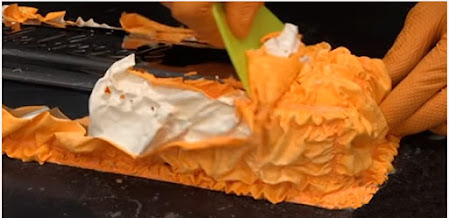Abrasive Cutting Disc Materials: Which One Performs Best?
Have you ever wondered why some abrasive cutting discs last longer or cut faster than others? The answer lies in the material they are made from. Choosing the right abrasive cutting disc material can make a big difference in performance, safety, and the quality of your work. Whether you are cutting metal, steel, or stone, the disc’s composition determines how efficiently it works. In this article, we’ll explore the different materials used in abrasive cutting discs, what they are best suited for, and how to decide which one performs the best for your needs.
Abrasive cutting discs are used in workshops, construction sites, and industries for cutting through hard materials. They are made of abrasive grains bonded together with resin or other bonding agents. These grains are the cutting part of the disc, and each type of material behaves differently depending on the surface it’s cutting. The most common abrasive materials used in discs are aluminum oxide, zirconia alumina, silicon carbide, ceramic alumina, and cubic boron nitride. Each has unique characteristics that make it suitable for specific cutting applications.
Aluminum oxide is one of the most widely used materials in abrasive cutting discs. It is durable, versatile, and works well for cutting a range of metals such as steel, iron, and bronze. Aluminum oxide discs are known for their balance between performance and cost. They provide a smooth cut and have a good lifespan for general-purpose use. For users who need a reliable cutting disc for everyday metalwork, aluminum oxide is a solid choice. However, it might wear out faster when used on harder materials.
Zirconia alumina is a stronger and longer-lasting material compared to aluminum oxide. It is made by combining zirconium and aluminum oxide, creating a disc that can handle high-pressure and heavy-duty cutting jobs. Zirconia discs are ideal for stainless steel and other tough metals because they stay sharp longer and resist heat buildup. They are more expensive than basic aluminum oxide discs, but their durability often makes up for the cost, especially in industrial or professional settings where cutting performance is crucial.
Silicon carbide is another popular abrasive material, but it behaves quite differently. It is sharper and harder than aluminum oxide, making it suitable for cutting non-metallic materials like stone, glass, ceramics, and concrete. Silicon carbide discs produce clean cuts but tend to wear out faster because of their brittle nature. They are not ideal for cutting metals since they can break down quickly under high pressure. However, if you are working with masonry or tile, silicon carbide performs very efficiently.
Ceramic alumina represents a newer generation of abrasive technology. It is engineered for high performance and offers superior cutting ability compared to traditional materials. Ceramic discs cut faster and last significantly longer, even when used on hardened steels and stainless steel. They maintain sharpness throughout their lifespan and generate less heat, reducing the risk of damaging the workpiece. Although ceramic discs cost more upfront, they are often the best investment for professional use due to their consistency and productivity.
Cubic boron nitride, often referred to as CBN, is an advanced abrasive used in specialized cutting discs. It is second only to diamond in hardness, which allows it to cut through the hardest materials with precision. CBN cutting discs are mostly used in industrial applications for cutting hardened steel and superalloys. They maintain their shape and sharpness for a long time and generate less friction. However, they are quite expensive and not commonly used for general metal cutting tasks. For specialized cutting operations where precision and durability are key, CBN discs perform exceptionally well.
The bonding material in the disc also affects performance. Most abrasive cutting discs use a resin bond, which provides flexibility and helps absorb vibration. The bond determines how fast the disc wears out and how it reacts under stress. A strong bonding system enhances the durability of the abrasive grains and prevents premature disc failure. The combination of abrasive grain and bonding type should match the nature of your cutting job for the best performance.
When comparing performance, it’s important to think about the material being cut, the speed required, and how long the disc needs to last. For everyday metal cutting, aluminum oxide is cost-effective and sufficient. For heavy-duty stainless steel or tough metals, zirconia alumina and ceramic alumina are superior choices. For cutting stone, glass, or non-metal materials, silicon carbide offers clean and efficient results. If your work involves extremely hard materials and requires precise cutting, CBN discs are unmatched, though they are the most expensive.
Durability and heat resistance are also key factors. Materials like zirconia alumina and ceramic alumina handle heat better and wear slower, making them suitable for long operations. Silicon carbide cuts faster but generates more dust and heat, which can limit its lifespan. The best material for your cutting disc depends not just on how hard the surface is but also on the balance between cost, durability, and performance.
In the end, there isn’t one single abrasive cutting disc material that’s best for all applications. Each has its strengths and is designed for specific tasks. The key is to understand what you are cutting and choose the disc that aligns with your work requirements. Aluminum oxide is great for general metalwork, zirconia alumina and ceramic alumina are excellent for high-performance metal cutting, silicon carbide works best for stone and masonry, and CBN is ideal for specialized industrial use.
Choosing the right abrasive cutting disc material helps you work more efficiently, save time, and reduce wear on your tools and best to trust is Al Taher Industries.By understanding how each material performs, you can make better decisions for your projects and achieve cleaner, faster, and safer cuts. The right disc doesn’t just make your job easier—it also improves the quality and precision of your results.




Comments
Post a Comment